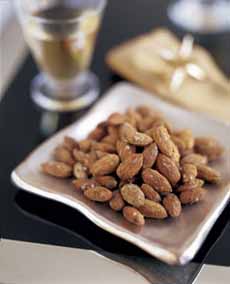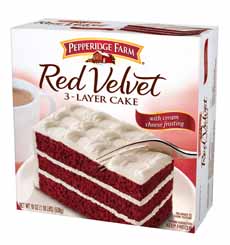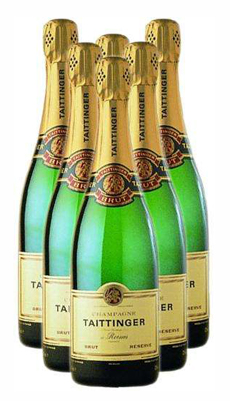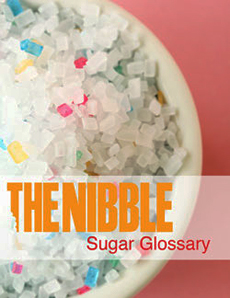|
Today’s tip comes from chef Johnny Gnall, who has discovered the joys of frothing milk at home. There’s no need to head to your favorite coffee bar when you can make frothy cappuccinos and lattes in your own kitchen.
“I made a recent purchase that has changed the way I start the day,” says Chef Johnny. “It has turned my regular morning coffee into a genuine treat, making each cup feel and taste like it was served to me in a chic cafe, perhaps in Rome or Florence. It’s the Capresso frothPro Milk Foamer.
“It couldn’t be easier to use. Simply fill the metal receptacle with milk, press a button (in addition to steamed milk or foam, you can choose cold, warm or hot, including cold foam for iced cappuccino) and watch as ordinary milk is whipped to steaming, frothy pulchritude—in less than a minute! Lowfat or nonfat milk foams the best: The fat in the milk weighs down the potential fluffiness.
|
|
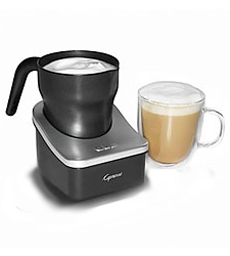
Little appliance, big foam. Photo courtesy
Capresso. |
“If you’re not a fan of foam, you can simply heat your milk to the temperature of your choosing. Warm or hot milk keeps the coffee warmer for longer. You can add foam to hot chocolate, too, or simply enjoy a glass of ’latte milk.’
“But there’s more than frothy, steamed milk to a gourmet espresso drink (see the different types of espresso drinks).
“To make authentic frothed coffee drinks, you need espresso, not regular coffee. If there’s no coffee bean specialty shop near you, you can buy good-quality espresso, whole or ground, at most grocery stores.
“To make the espresso, I suggest using a moka pot, a classic stovetop espresso maker like this one from Bialetti. Yes, it’s another appliance, but it’s small, inexpensive (under $25.00), easy to use and should last you a lifetime. If you are lucky enough to have the expensive countertop barista-style espresso machines, more power to you.
“Now that you have a few shots of espresso and a cup of foamed milk, you’re ready to construct your drink. But what to make? And how?
“Many coffee drinkers know their go-to drink and just how they like it; but if you have the tools at your disposal, why not branch out? Here’s a list of the most popular espresso drinks and how to make them. If you try each one, you may have a few new drinks in your morning repertoire that will make it that much easier to rise and shine.”
|
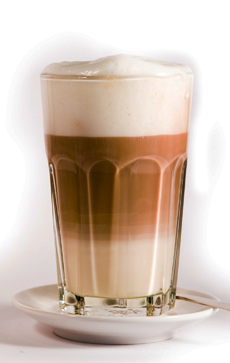
Make lovely lattes at home. Photo by Christian Kitazume | SXC. |
|
MAKE THESE ESPRESSO DRINKS
Espresso: This is the starting point for pretty much any gourmet coffee drink (and never spelled “expresso,” an unfortunate American error). It is stripped down, basic, strong and really quite wonderful on its own if you have fine espresso beans. It also gives you a chance to really appreciate the texture and flavor of espresso. Enjoy a quick shot down the hatch to get those eyes open, or sit and sip it leisurely on a weekend morning.
Caffé Americano: This is basically an espresso dumbed down. I am convinced that the name was coined to make fun of Americans who cannot handle the bitter, often intense flavor of espresso. To make it, simply start with a shot or two of espresso and dilute with boiling hot water. You can go with a 1:1 ratio of espresso to water, or start with a shot and fill your cup the rest of the way with water. However you like it, you probably don’t want to be caught ordering one of these in Italy.
|
Caffé Latte: This may be the easiest to start with if you are just breaking into espresso drinks. Start with a shot of espresso, fill the remaining space in the cup with delicious, soothing, steamed milk, and top it off with a touch of foam. The espresso flavor is there, but in a latte it exists in the background, somewhat muted by the abundance of milk. It’s a great beverage for someone who’s not into super-strong coffee.
Cafe au Lait: This is, essentially, a French-style latte and another very accessible drink for those who don’t want intense espresso flavor. In fact, it isn’t an espresso drink at all; it’s made with regular, albeit strong French-style, coffee. Simply pour half a cup of extra-strong coffee and finish filling the cup with steamed milk. Foam isn’t traditionally found on a Cafe au Lait, but no one will report you if you add some.
Caffé Mocha: This is the espresso drink for chocolate lovers. Start by covering the bottom of the cup with some quality chocolate syrup (being a resident of San Francisco, I like Ghirardelli). Then add a shot or two of espresso, stir a few times, and fill the rest of the way with steamed milk. If you’re not worried about calories, you can finish with the traditional whipped cream. If you make it correctly, however, the whipped cream isn’t necessary.
Cappuccino: This is the drink for which you really need the foam. The traditional cup size is 6 ounces only; but hey, it’s your coffee, so use as large a cup as you’d like. What you’re going for is a 1:1:1 ratio of espresso, steamed milk and foam, poured in that order. This beverage showcases a balance of its ingredients and definitely has the greatest range of textures and flavors, from earthy to ephemeral.
Macchiatto: From the Italian word for “marked,” this drink is mostly about the espresso, with just a tiny “marking” of foam and/or milk. To make it correctly, you should use a demitasse cup: Pour a shot of espresso, then add just enough foam to cover it. You can definitely use some of the milk itself (as opposed to just foam), and how much depends on your preference. However, this drink should really be all about the espresso with a complement of milk/foam. It’s the go-to espresso drink for coffee geeks and espresso enthusiasts.
For less than $60.00, the Capresso frothPro is a worthy addition to the kitchen and a great gift. Get yours.
|
|
